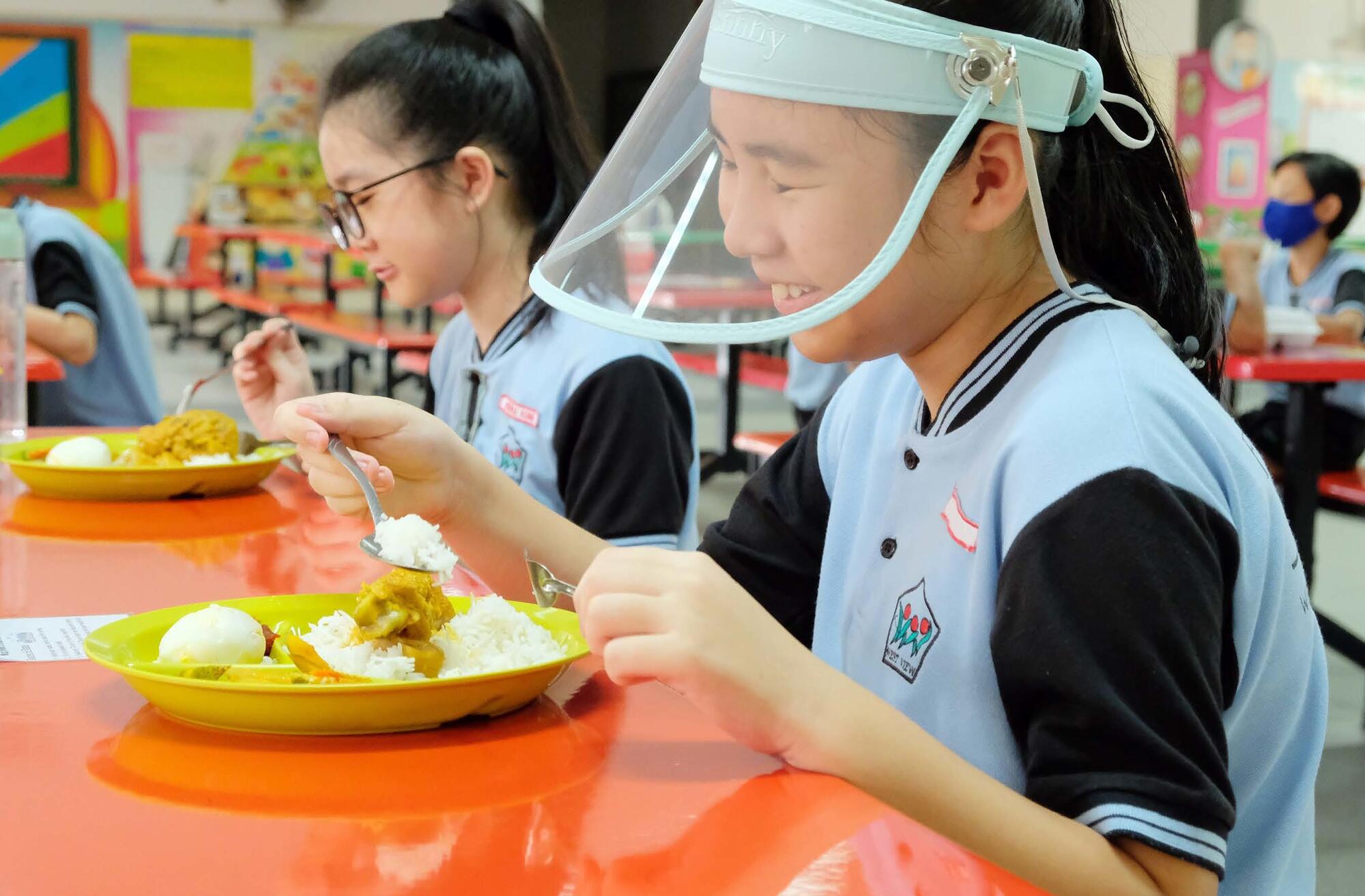When The Sunday Times published a survey in which artists were ranked as the top non-essential job in a pandemic, the teachers at Bukit View Secondary School saw it as a good opportunity to have conversations with their students about the value of the arts in its many forms. After all, the school’s Learning for Life Programme is ‘Learning the Arts, Living the Values’, and teachers wanted students to know the important role that art and artists played in uplifting people, especially during trying times.
And so was born Arts@Kismis, a grounds-up Values-in-Action (VIA) initiative for migrant workers at Kismis Dormitory.
Responding to current social issues
When COVID-19 hit the migrant worker dormitories, the school wanted to help students understand the current situation and contribute.
They came up with four initiatives to help different groups of migrant workers, who have different needs. One of them was Arts@Kimis, an initiative to lift the spirits of the workers, who had recently moved into vacant state properties at Kismis Avenue, through the arts.
These were healthy workers working in essential services who had been shifted out of their dormitories as a precaution. While dealing with curfews and limited social activities, they were also anxious about their friends, and their livelihoods.
“We wanted to let the migrant workers know that Singaporeans care about them,” said Mrs Shirley Lee, Vice-Principal of Bukit View Secondary School “We thought the arts is a good avenue – after all, it transcends cultures. It is a way for us to bridge the language barrier and reach out to the migrant workers.”
Putting the Arts in action
Arts@Kismis encompasses a range of art forms, which were creatively put together by the staff and students with the migrant workers’ plight in mind. It was also a way for students to express their talents and explore their interests in the arts.
For example, the lower Secondary students designed postcards and folded more than 10,000 origami hearts with messages of encouragement for the migrant workers. Selected postcards were made into a collage and sent to Kismis dormitory. To raise awareness for the cause, students and staff also arranged the origami hearts and set the record for the longest line of origami hearts (319m) in the Singapore Book of Records.
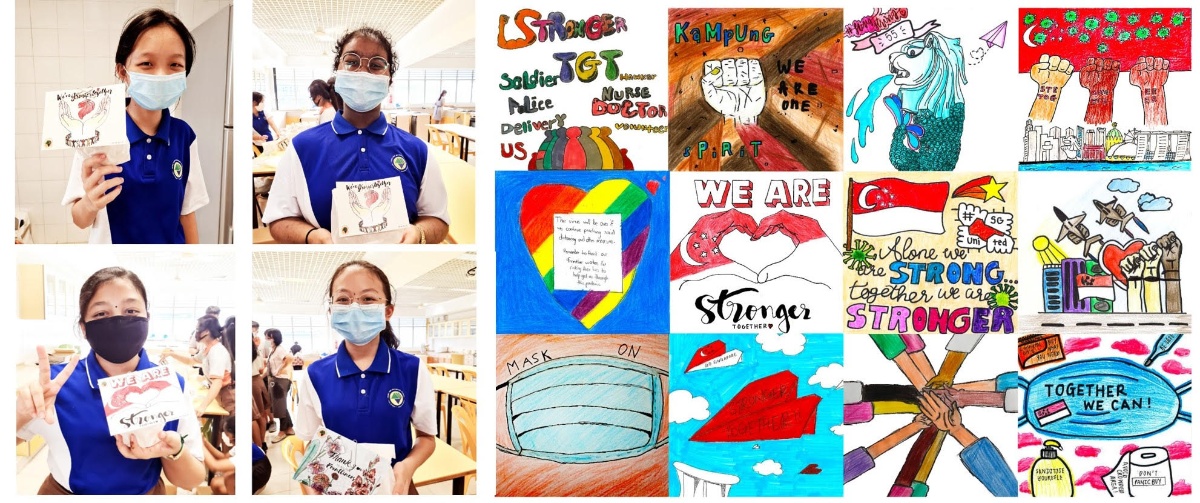
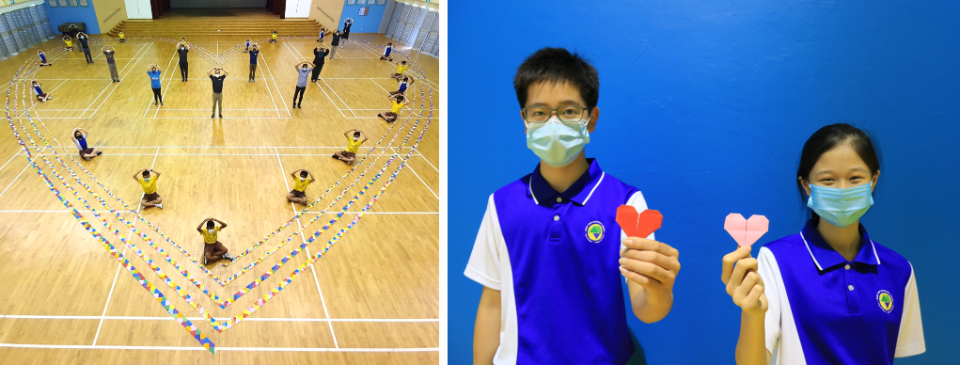
In the Upper Secondary Literature class, teachers facilitated a discussion on migration and the experiences of migrant communities around the world. The students then composed poems to acknowledge the challenges faced by the migrant workers and their contributions to Singapore. These poems were translated into Tamil and Bengali by volunteers at Kimis Dormitory, and shared with the residents.
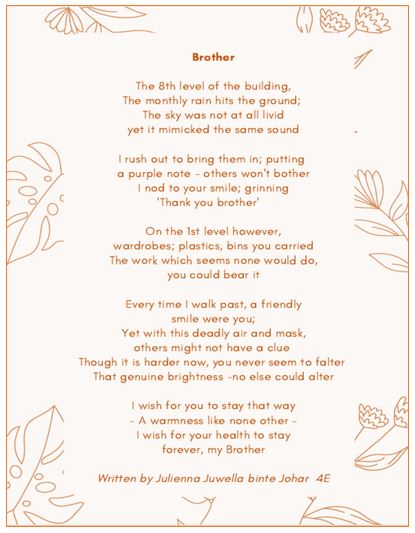
The Dance Club members came together to discuss how they could best serve the needs of the migrant workers. The students thought that being cooped up in the dormitory may lead to the workers feeling restless, so they came up with a workout video incorporating simple dance moves that the workers could follow.
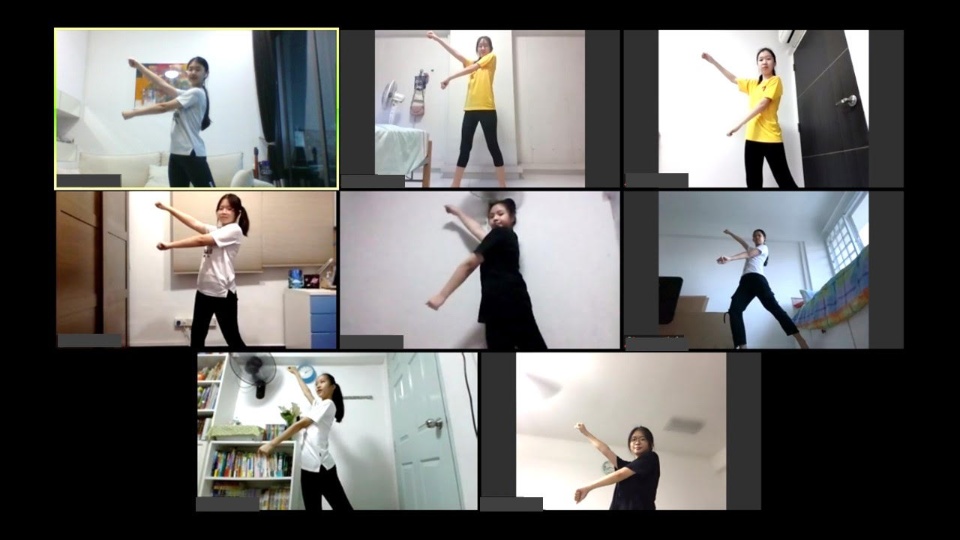
Mrs Dharani Dinesh, Teacher IC of the Dance Club shared, “It was heartening to see the student leaders take the initiative and put the dance fitness video together. It was a wonderful opportunity for them to hone their leadership skills and serve the community.”
Another group of staff and students produced a series of music videos that introduced catchy local tunes, accompanied by the ukulele and lots of positive energy to encourage the migrant workers.
Lastly, the students from the Gear-Up culinary arts programme baked over 500 muffins and other desserts for the workers. These were delivered to the dormitory with all the other literary and musical goodies. Afterall, the culinary arts can be considered a type of art, yes?
No matter where their talents or interests lay, students had a way to contribute.
Mrs Lee added, “By helping students connect their strengths and skills to make a positive difference to others, we hope they will find a sense of purpose during this difficult period.”
From the school to the dormitories
Due to safe management measures, the students were unable to visit the dormitory and personally hand their gifts to the migrant workers.
However, the school worked closely with the volunteers from Kismis Migrant Workers Support Group throughout the project. They coordinated the delivery of the items, and also helped explain the students’ messages to the residents of the dormitory.
To help students connect with the workers, the volunteers also put together a video where a resident introduced himself and how he came to work in Singapore. This helped the students get a glimpse of the residents’ lives.
Ms Annie Gan, Chairperson for Kismis Migrant Workers Support Group, shared, “Being cooped up in a place for an extended period can affect one’s mental health. The workers were grateful for the art pieces by the students and were touched that youths in Singapore remember and care about them.”
The students looked beyond art to make a difference to the migrant workers as well.
Besides Arts@Kismis, the school also organised a donation drive for staff and students to donate essential supplies for the COVID Migrant Support Coalition (CMSC). Students helped to sort and pack over 60 boxes of masks, food and other household items for workers in need.
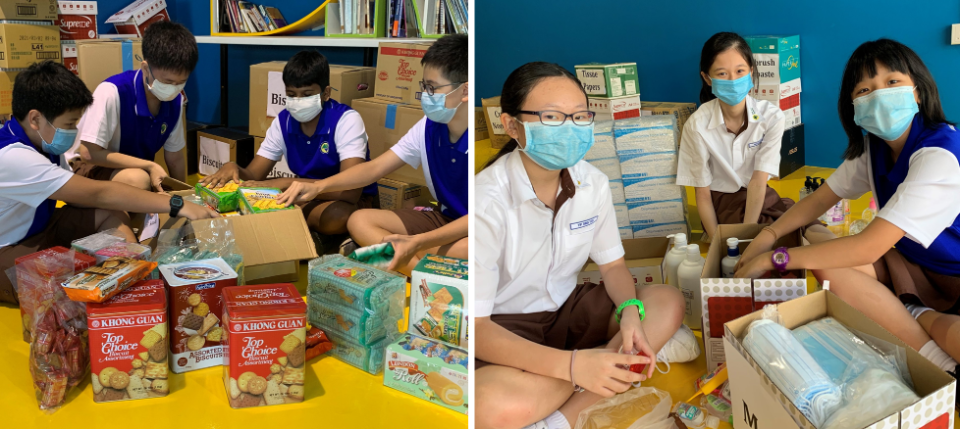
All these meant quite a bit of work – for students and teachers alike. But they were fully in support of this school-wide initiative.
Ms Loke Puay Yin, Art teacher, shared, “Through Arts@Kismis, I witnessed the strong spirit of care and the creativity from my colleagues and students. When we saw photographs of migrant workers receiving our gifts with smiles on their faces… it was uplifting.”
The students also found it a fulfilling experience.
As one of the students whose artwork was chosen to be sent to Kismis Dormitory said, “I feel grateful that my artwork could encourage people to hang in there during this time of crisis.”



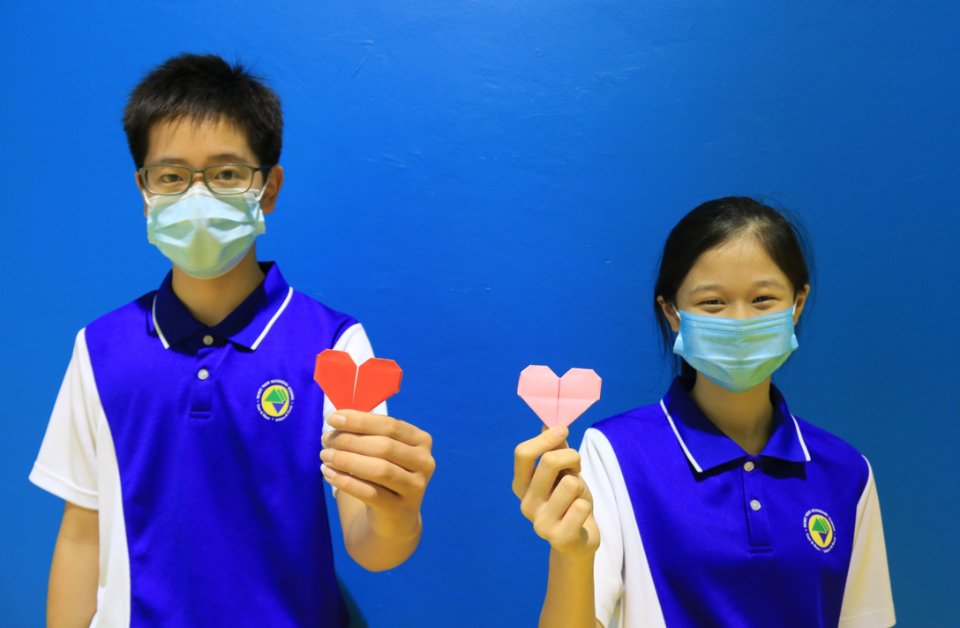
-(1).jpg)
.jpg)
